Castagnole are an easy and delicious sweet treat that you can either bake in the oven or deep fry.
They are made without yeast, and they are very easy to prepare, with simple ingredients.
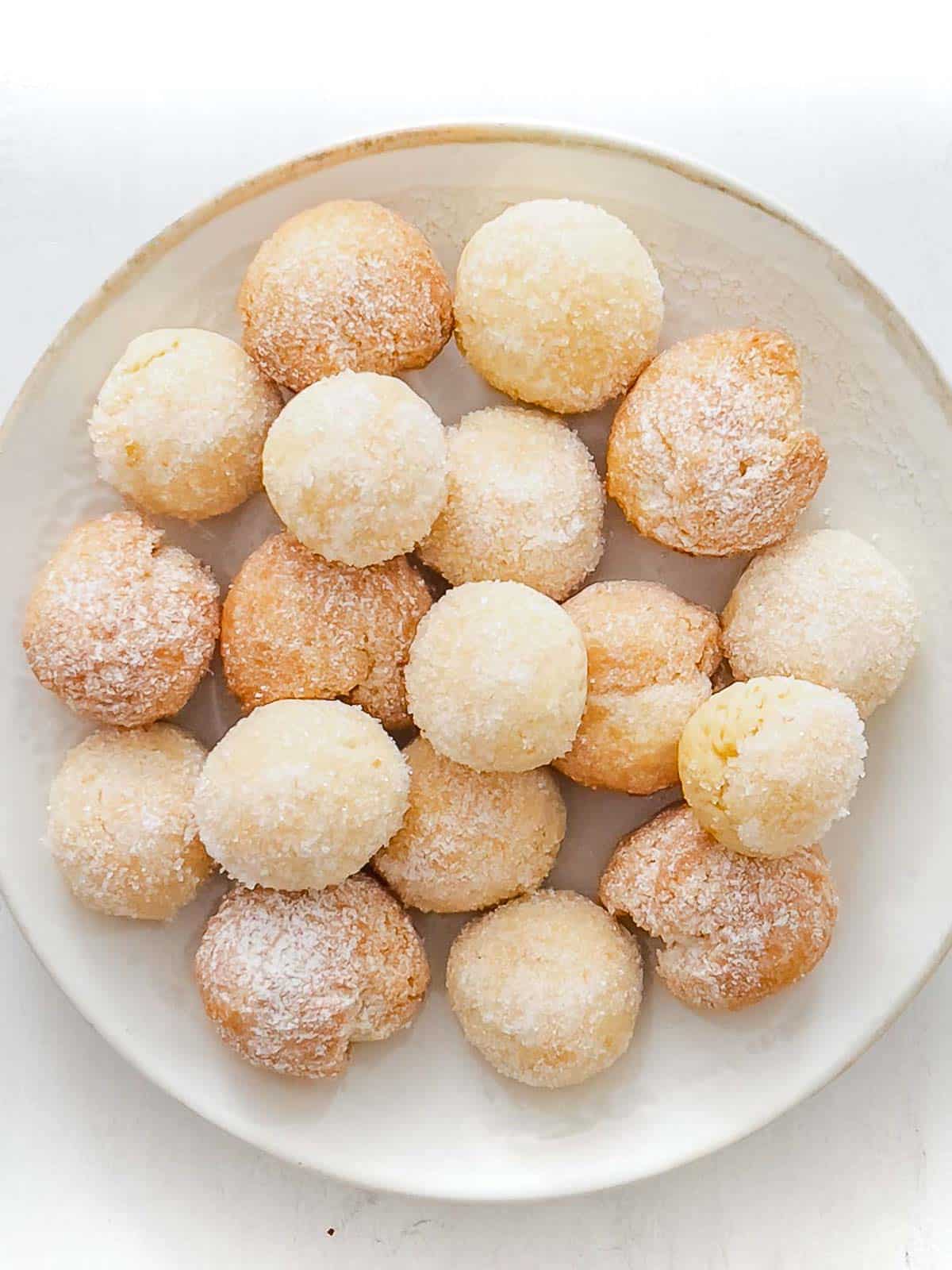
What are castagnole?
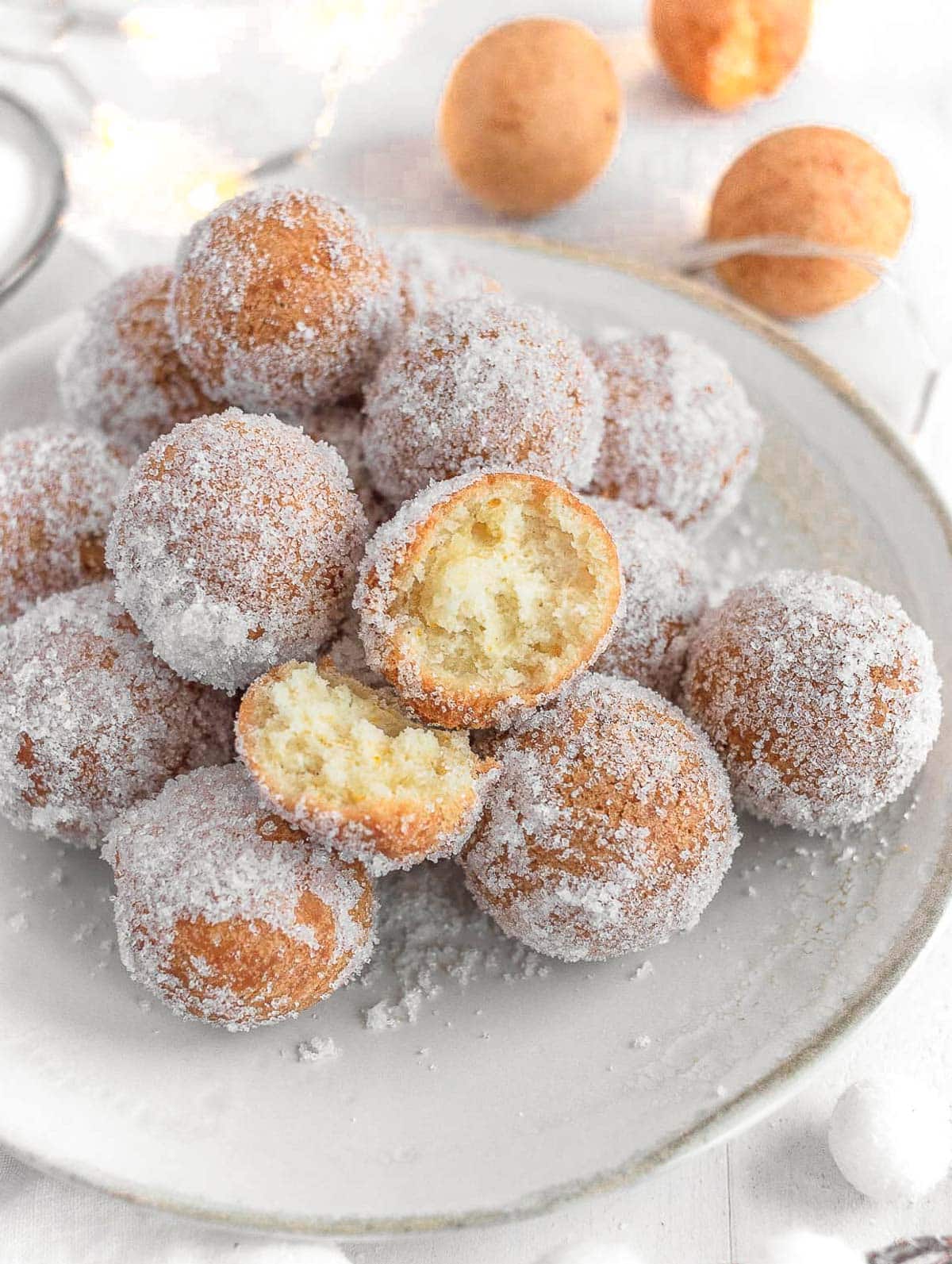
Castagnole are one of the most popular carnival sweets in Italy. They are basically the Italian version of American sweet dough balls, or donut holes without yeast. Castagnole in Italian means “small chestnuts”.
Castagnole are very easy to make with a few simple ingredients. There are two main versions: baked and deep-fried. Our version is without eggs or butter, and incredibly delicious.
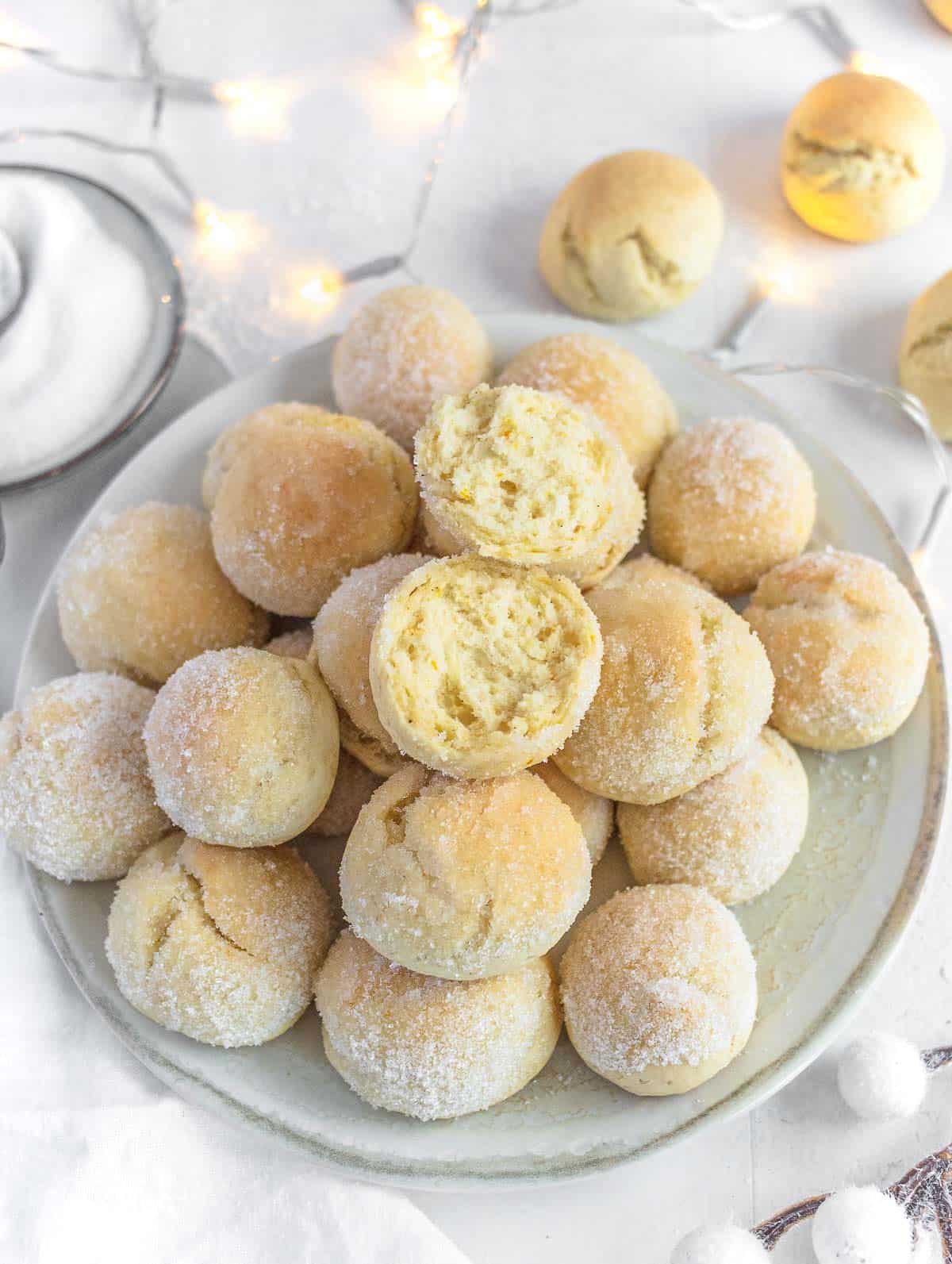
Baked castagnole are soft, moist, and light, but they still pack loads of flavor.
Deep-fried castagnole are crisp on the outside, golden, and super soft on the inside. They are absolutely delicious.
Ingredients & Substitutions
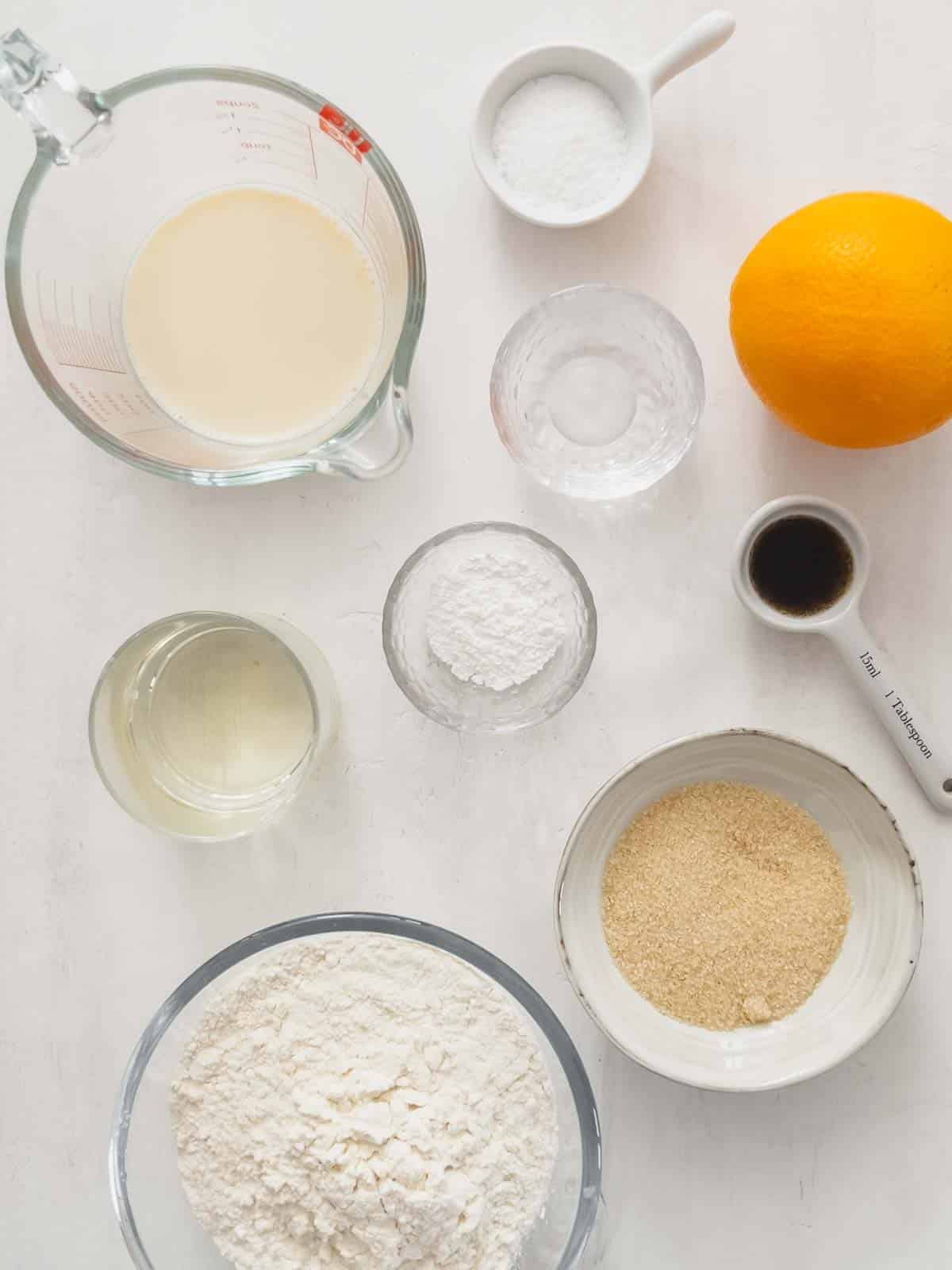
- All-purpose flour: you can replace it with cake flour or bread flour.
- Sugar: white or brown sugar.
- Baking powder: to make them light and airy.
- Salt: just a pinch for flavor.
- Citrus zest: you can use orange or lemon zest.
- Plant milk: soy, oat, almond, rice, or any other plant milk.
- Sunflower seed oil: you can replace sunflower oil with any other vegetable oil that is light in color and neutral in flavor.
- Vanilla extract: for aroma. You can replace with real vanilla beans.
- Liquor: in Italy a little liquor, usually anise liquor, is added to the dough. You can replace anise liquor with any other liquor or with white wine. If you want to make castagnole alcohol free, then add more plant milk instead.
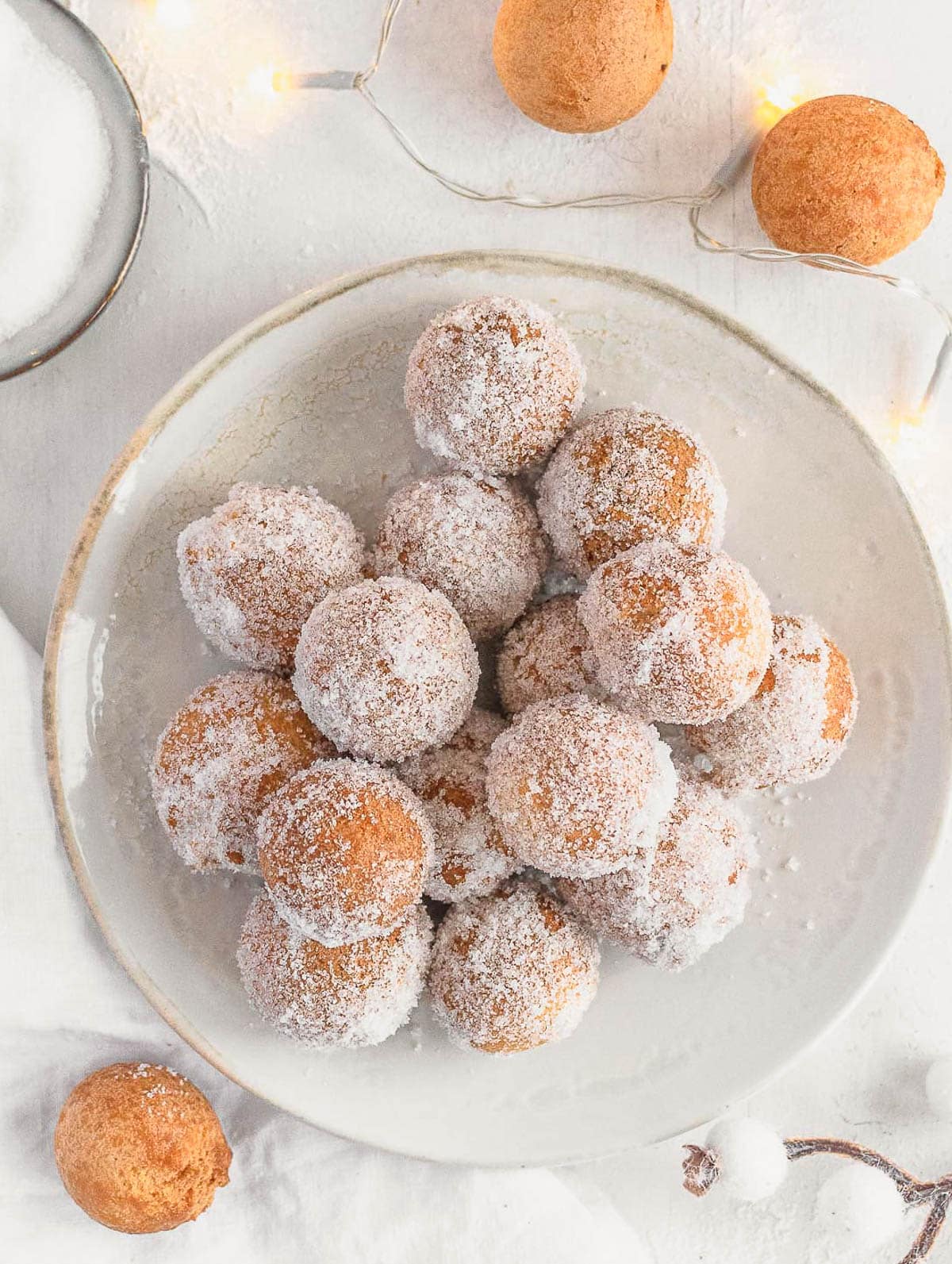
How to make castagnole?
Start with the dough
To a bowl, add 1⅔ cup (250 grams) of all-purpose flour, ⅔ cup (70 grams) of sugar, a pinch of salt, 1 teaspoon (4 grams) of baking powder, and the grated zest of an orange or lemon, preferably organic as we are eating the peel.
When grating the zest of citrus fruit, we only grate the external peel, as the white flesh under the peel can be quite bitter.
Add the grated zest to the bowl and give it a quick stir to combine the ingredients.
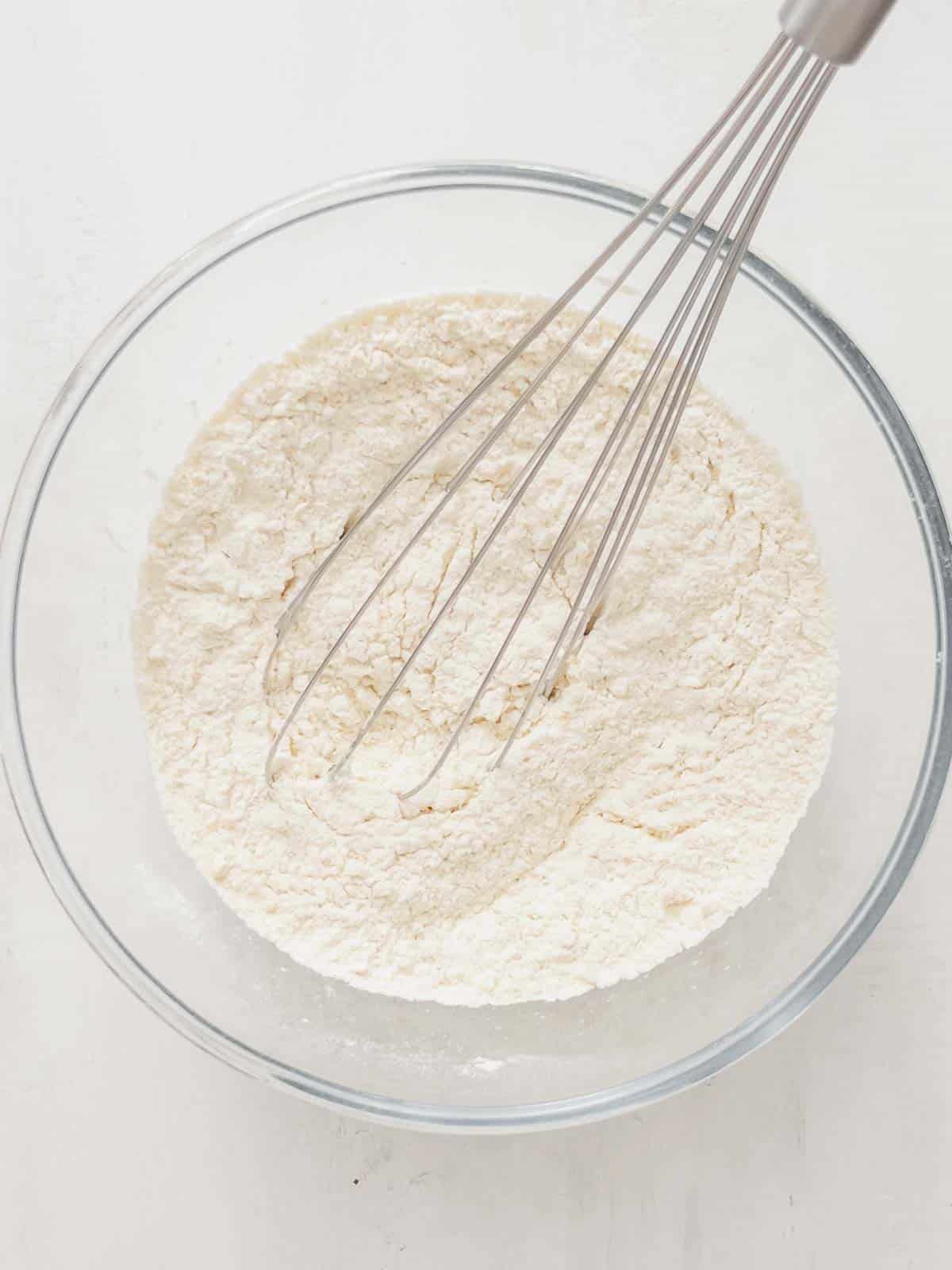
Then add ¼ cup (60 grams) of any plant milk of your choice and 3 tablespoons (40 grams) of neutral vegetable oil, such as sunflower seed oil or canola oil.
Then in Italy, we like to add 2 tablespoons (30 grams) of anise liquor or any other liquor really, but if you’d like to make the donut holes alcohol-free, then just add some more plant milk.
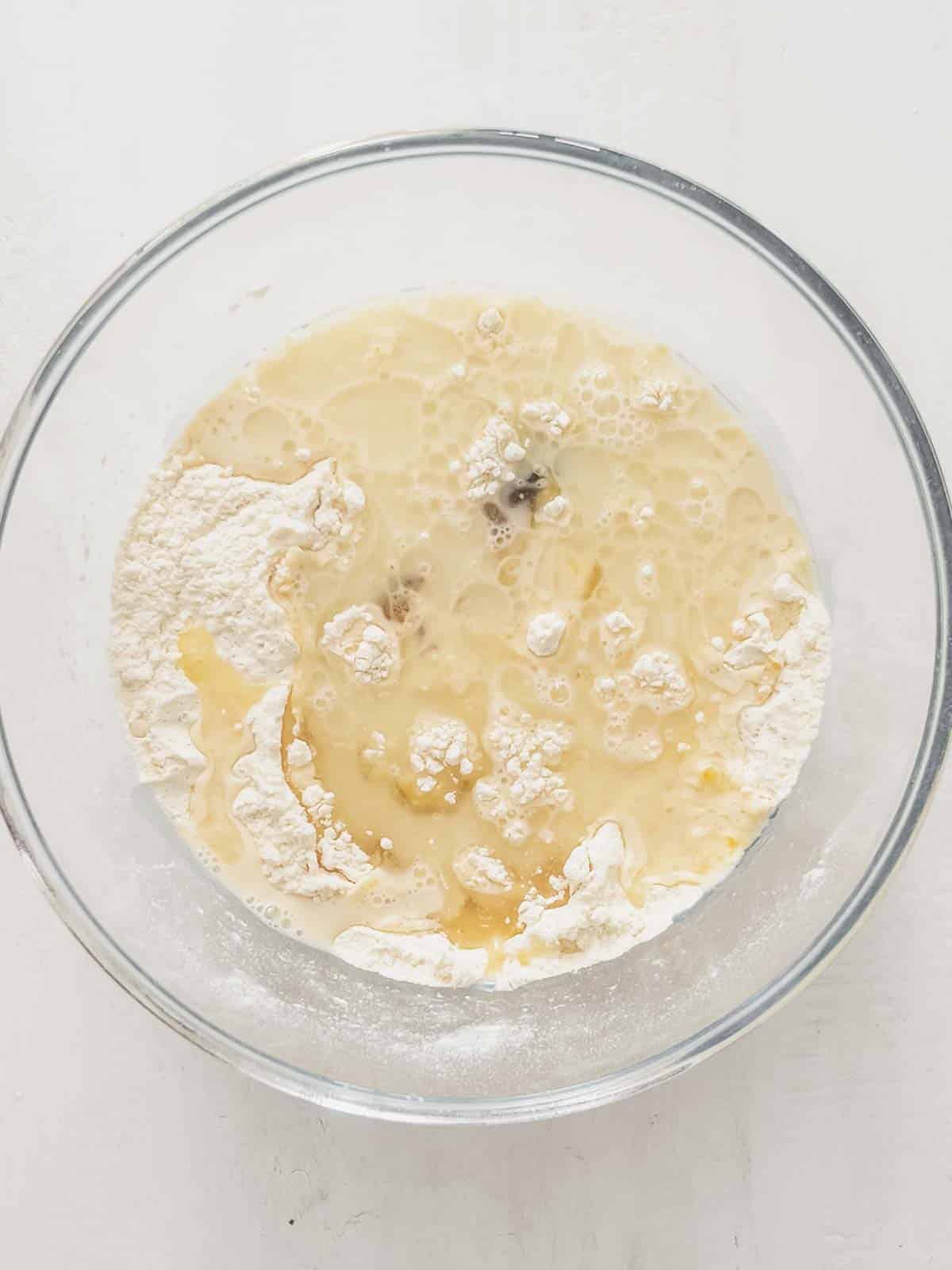
As a next step, mix the ingredients with a spatula till you get a dough consistency, then transfer to a worktop. I actually like to use a large cutting board here and knead with your hands for about 5 minutes.
Try not to add any flour at this stage, only do so if the dough really sticks to your hands.
By the end, you should get a soft and smooth dough, but that doesn’t stick to your hands.
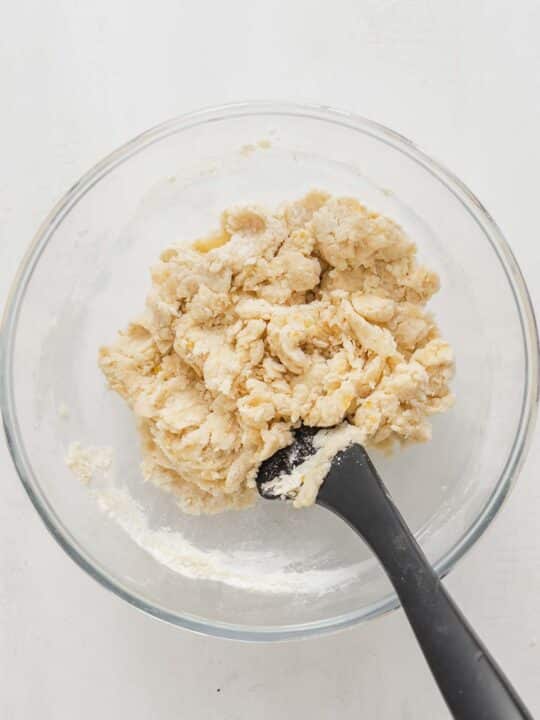
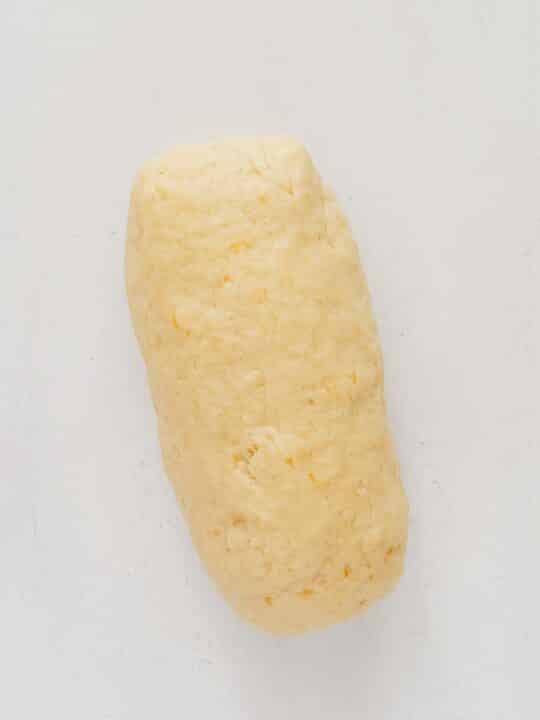
Shape the dough balls
We can now shape the donut holes, or the castagnole, which in Italian means little chestnuts because they do look like small chestnuts.
With our doses, you should get around 32 castagnole. To do that, cut the dough in half, then in half again, and again, and again, till you get 32 pieces.
If you want to be more precise, each doughnut hole should weigh between 12 and 14 grams.
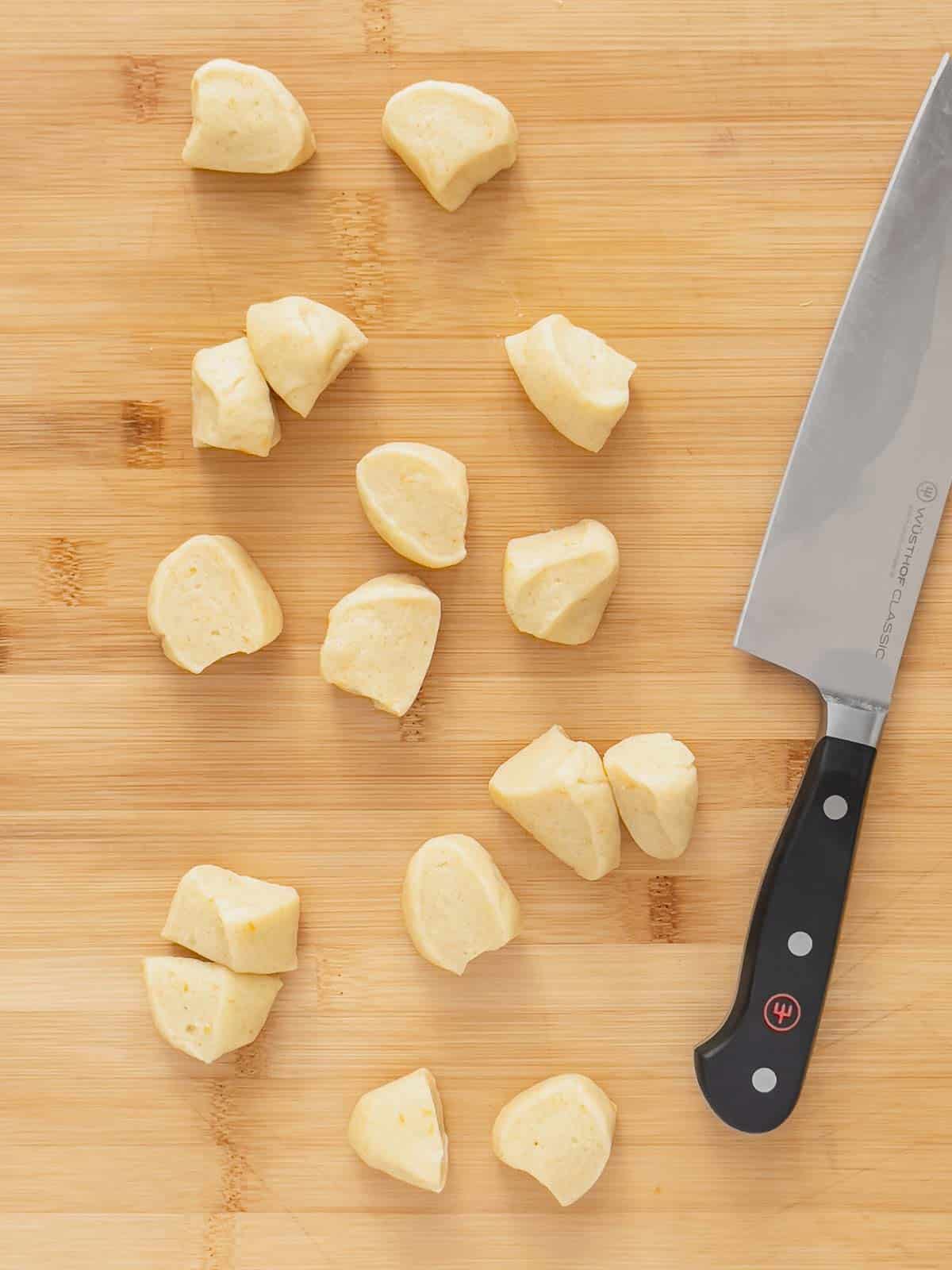
Shape each piece of dough into a small ball. You can do so by rolling it between the palms of your hands.
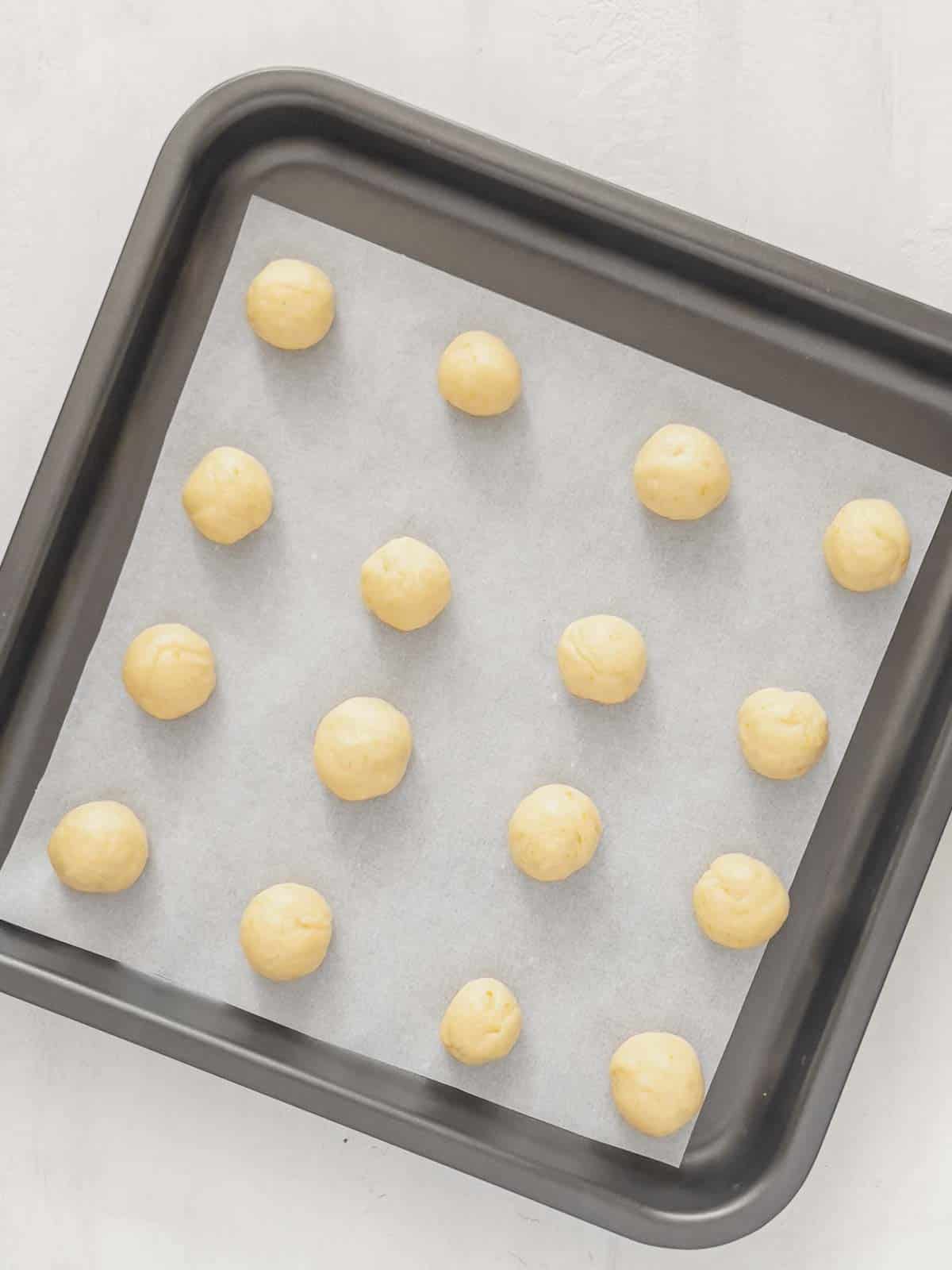
Oven baked castagnole
To bake them, place them onto a baking tray lined with parchment paper.
Now you can bake them in a preheated oven at 360 degrees Fahrenheit or 180 degrees Celsius for 12 to 14 minutes max.
Keep an eye on the castagnole while they are in the oven. You don’t want them to get brown on top. They should stay almost white, or just lightly colored on top.
This way they will stay soft and moist in the center and will be a pleasure to eat.
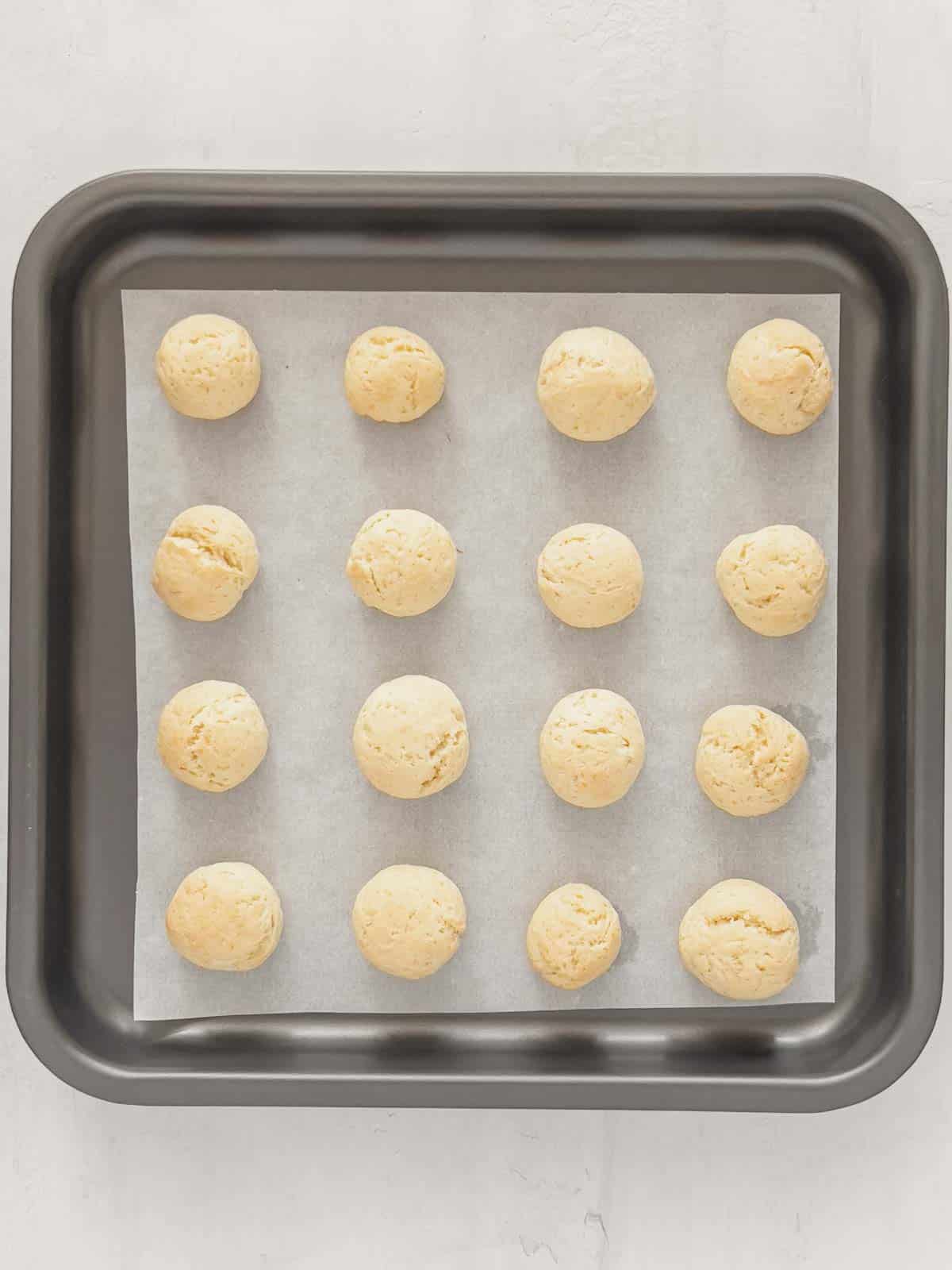
Once cooked, let them cool down for a minute or two, then dip each doughnut hole first in plant milk, then roll it in sugar, or if you like, cinnamon sugar.
Repeat this step till you run out of donut holes, and you are done.
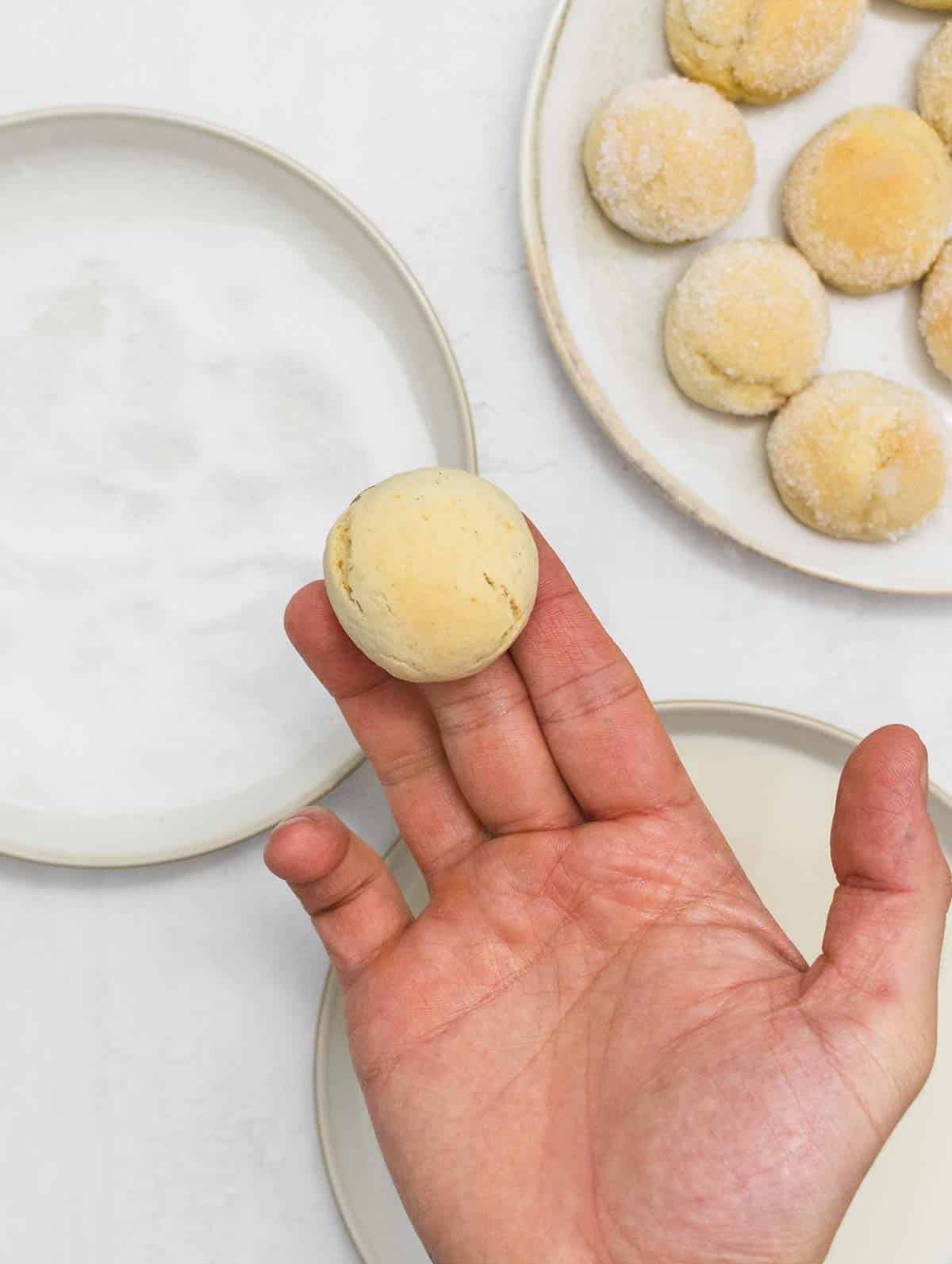
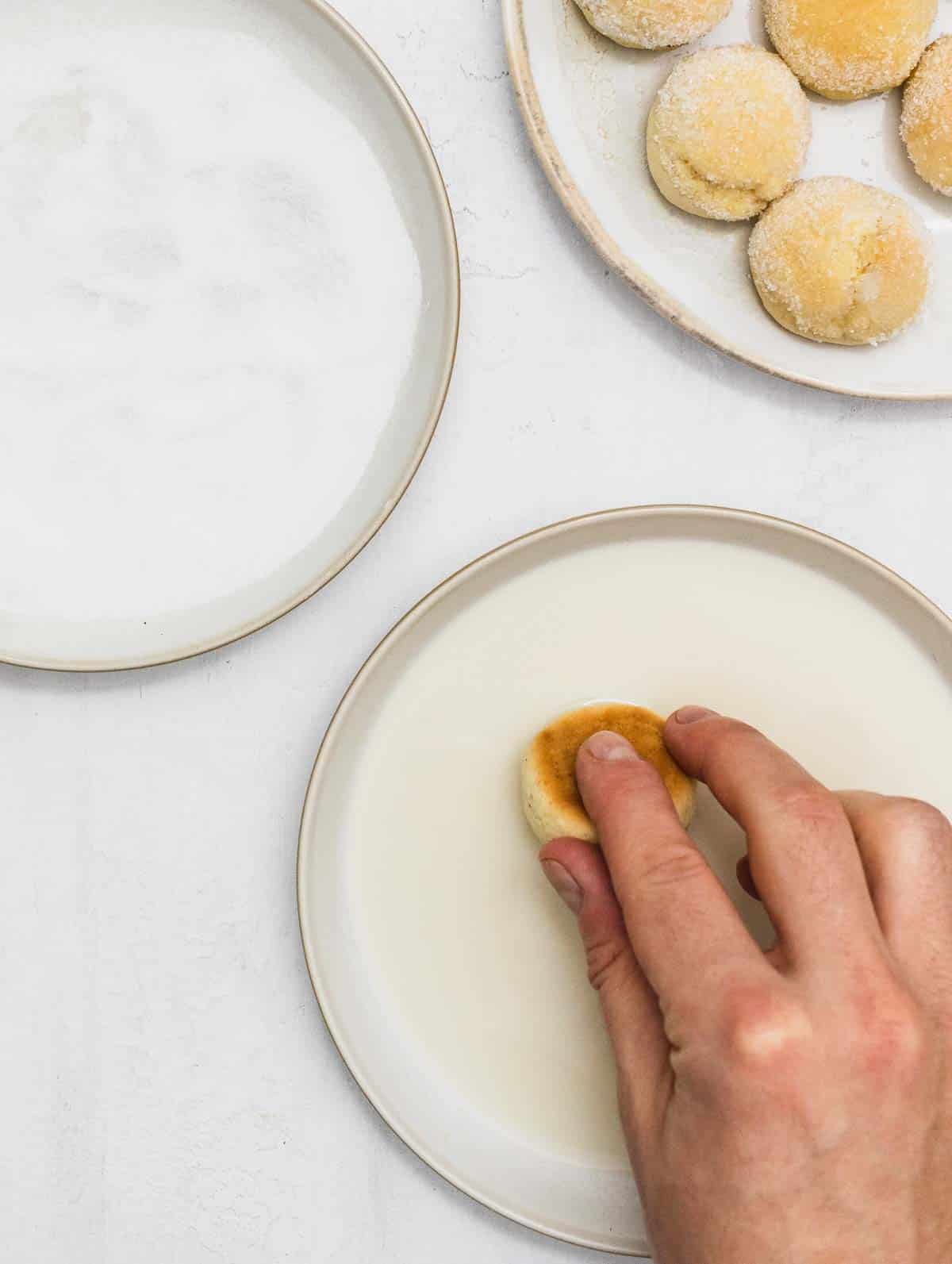
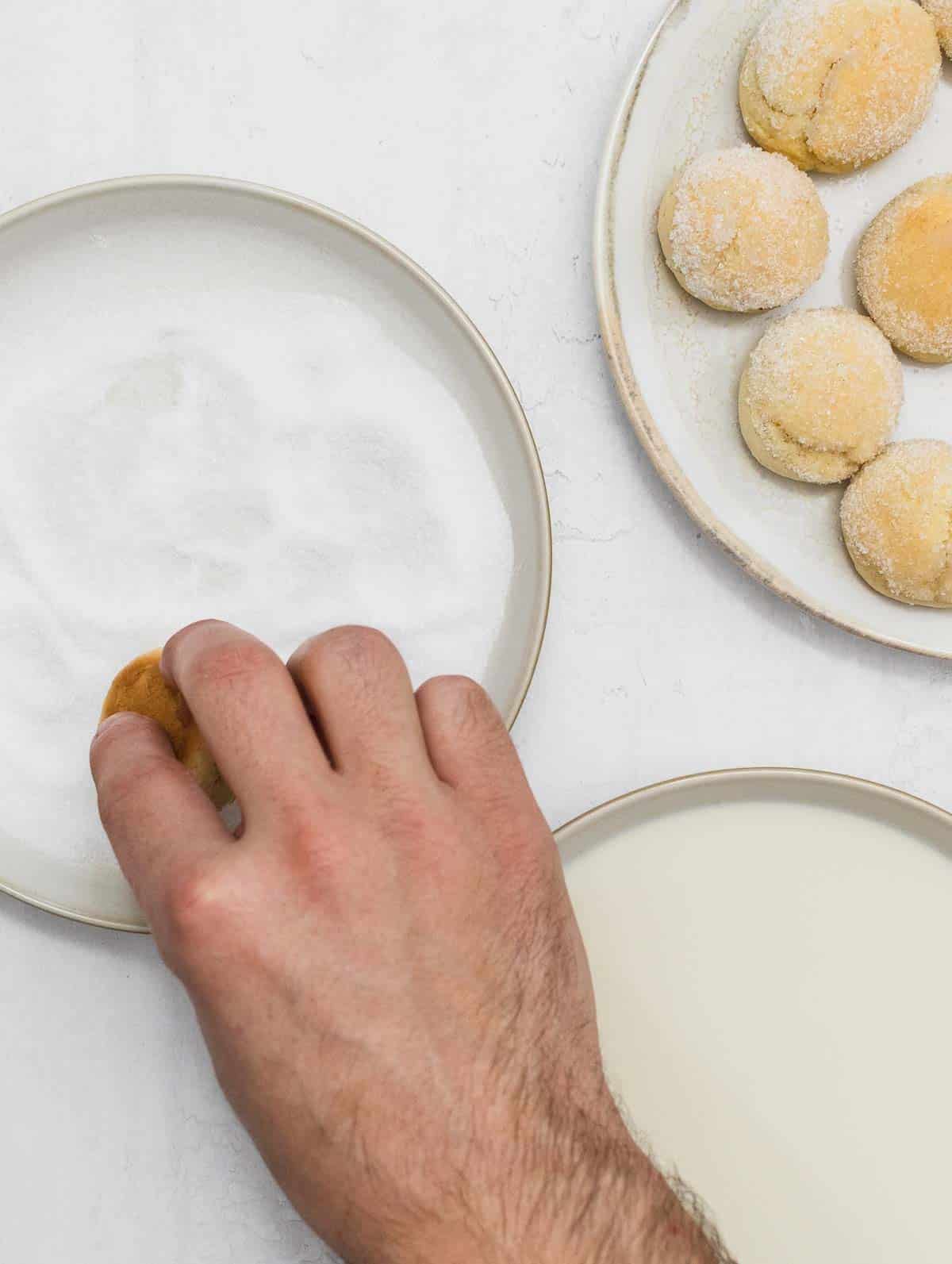
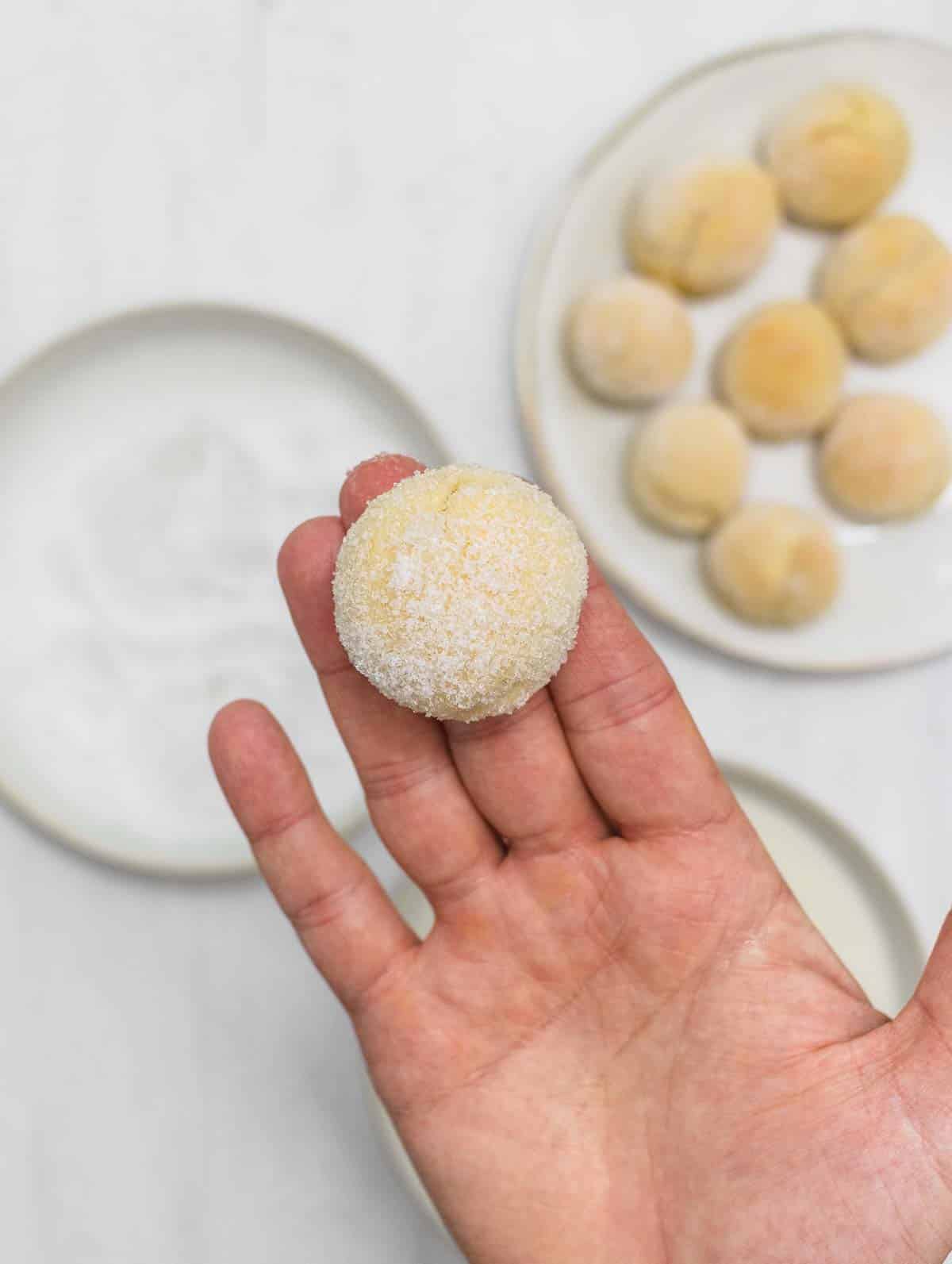
Deep-fried castagnole
Then If you want to deep fry the castagnole then you’ll need about ½ gallon or 2 liters of frying oil, like for instance peanut oil.
Frying oil has a high smoke point, usually well above 400F or 200C. Smoke point is the temperature at which oil smokes, or burns, and releases harmful compounds which you don’t want to eat or breath.
So keep the oil temperature well below your oil smoke point.
Deep frying requires your full attention so make sure you don’t do this if you have kids running around in the kitchen or if you are scrolling through your phone.
Now, add the oil to a pot with tall edges. The oil should only reach half of the pot. Warm up the oil till you reach a temperature of 340 degrees Fahrenheit or 170 degrees celsius.
If the oil is too hot it will burn the castagnole. If the oil is not hot enough, the food will absorb too much oil.
For best results keep the oil temperature between 330 and 350 degrees Fahrenheit or 165 and 175 degrees celsius.
When the oil is at the right temperature gently add in the doughnut holes, with the help of a spoon. You can add a few of them at a time, but start with one or two if you’ve never deep-fried before.
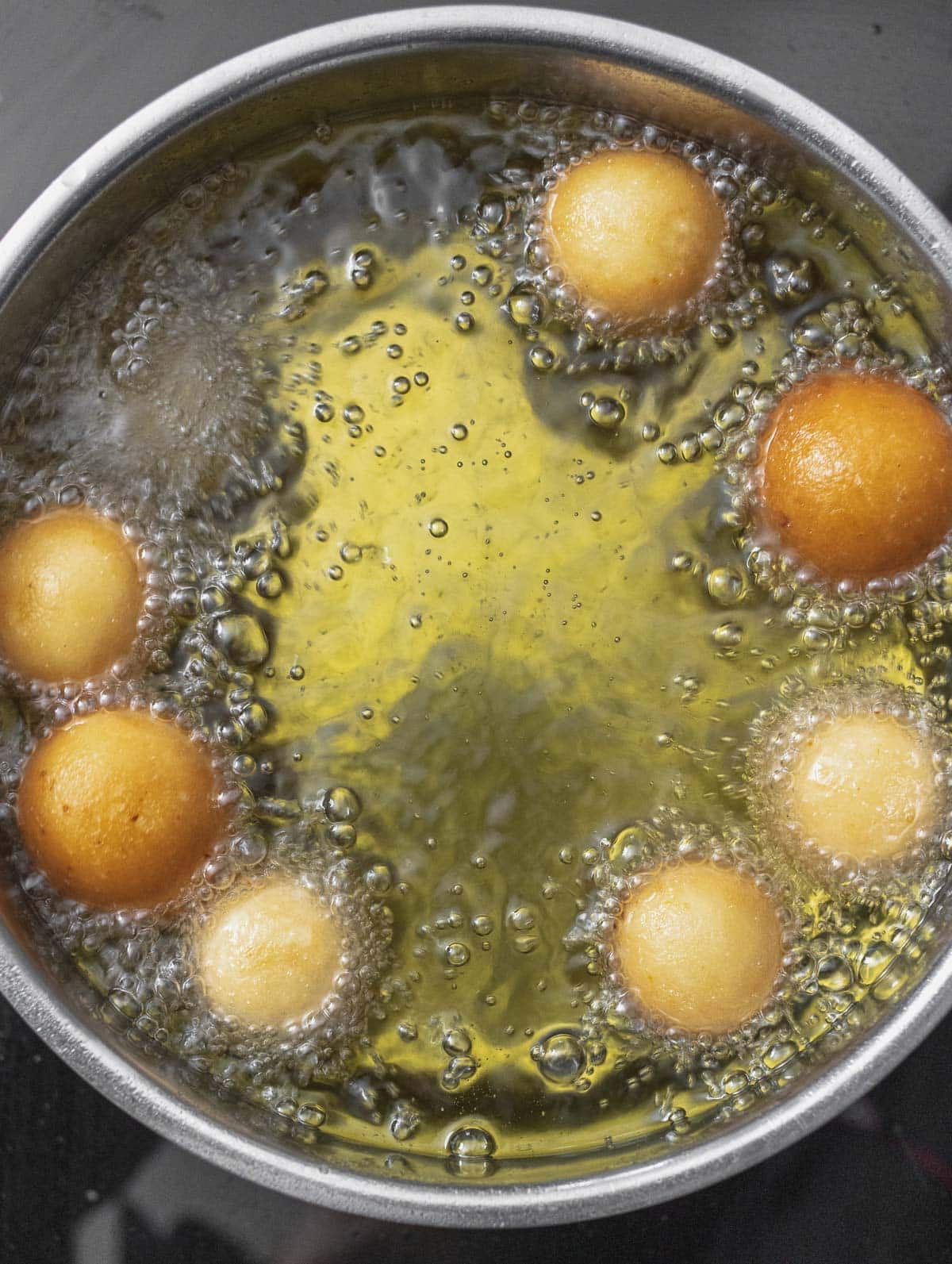
Cook the donut holes for about 2 to 3 minutes max, until they get slightly puffy, crispy and golden.
Now take them out of the oil, let them drip, and place them onto a tray lined with kitchen paper to absorb excess oil.
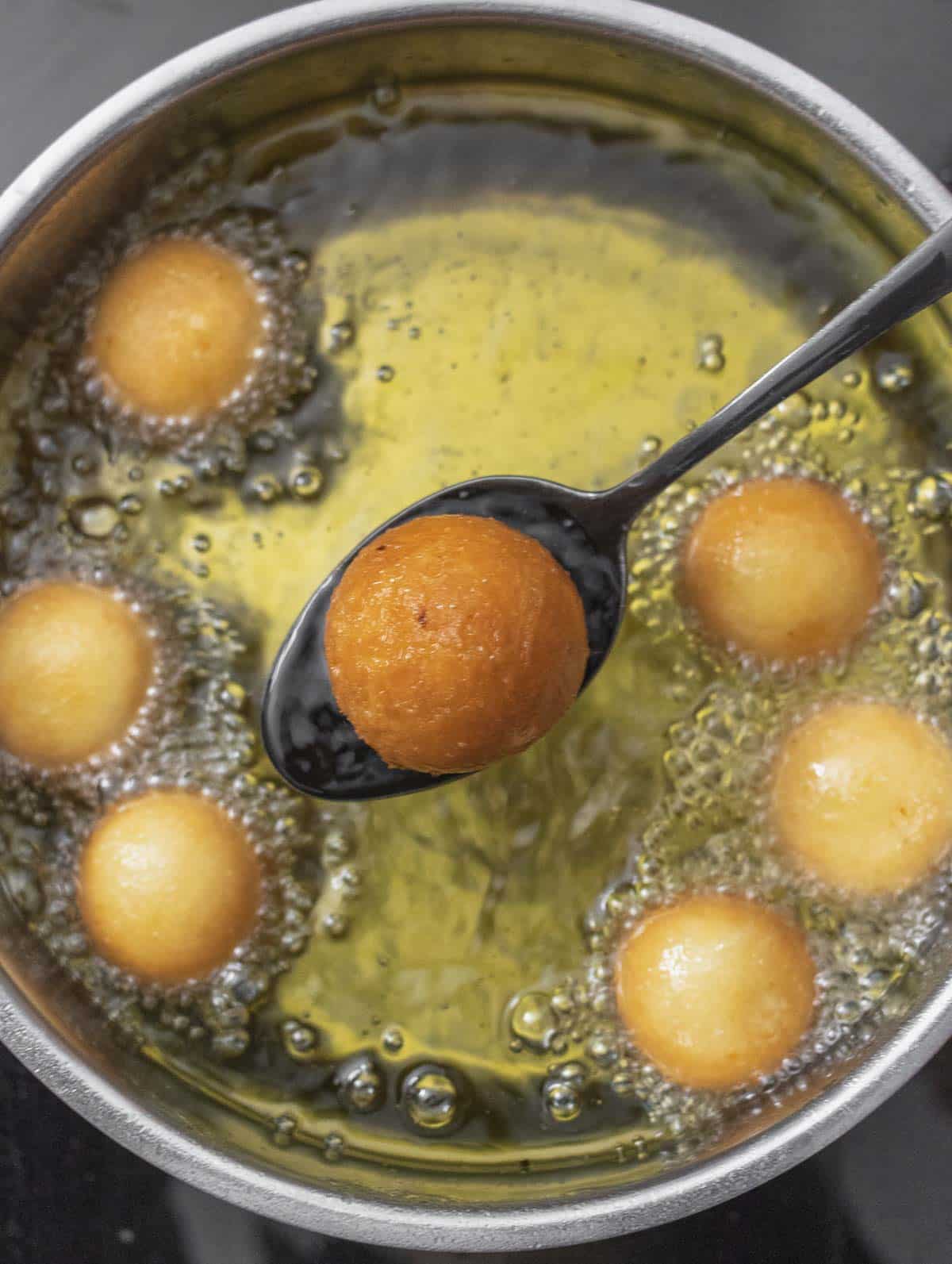
Repeat till you run out of sweet dough balls, then arrange them onto a serving platter and sprinkle with powdered sugar or if you prefer, roll them in white sugar.
And here you have it, a delicious batch of castagnole, deep-fried and oven-baked.
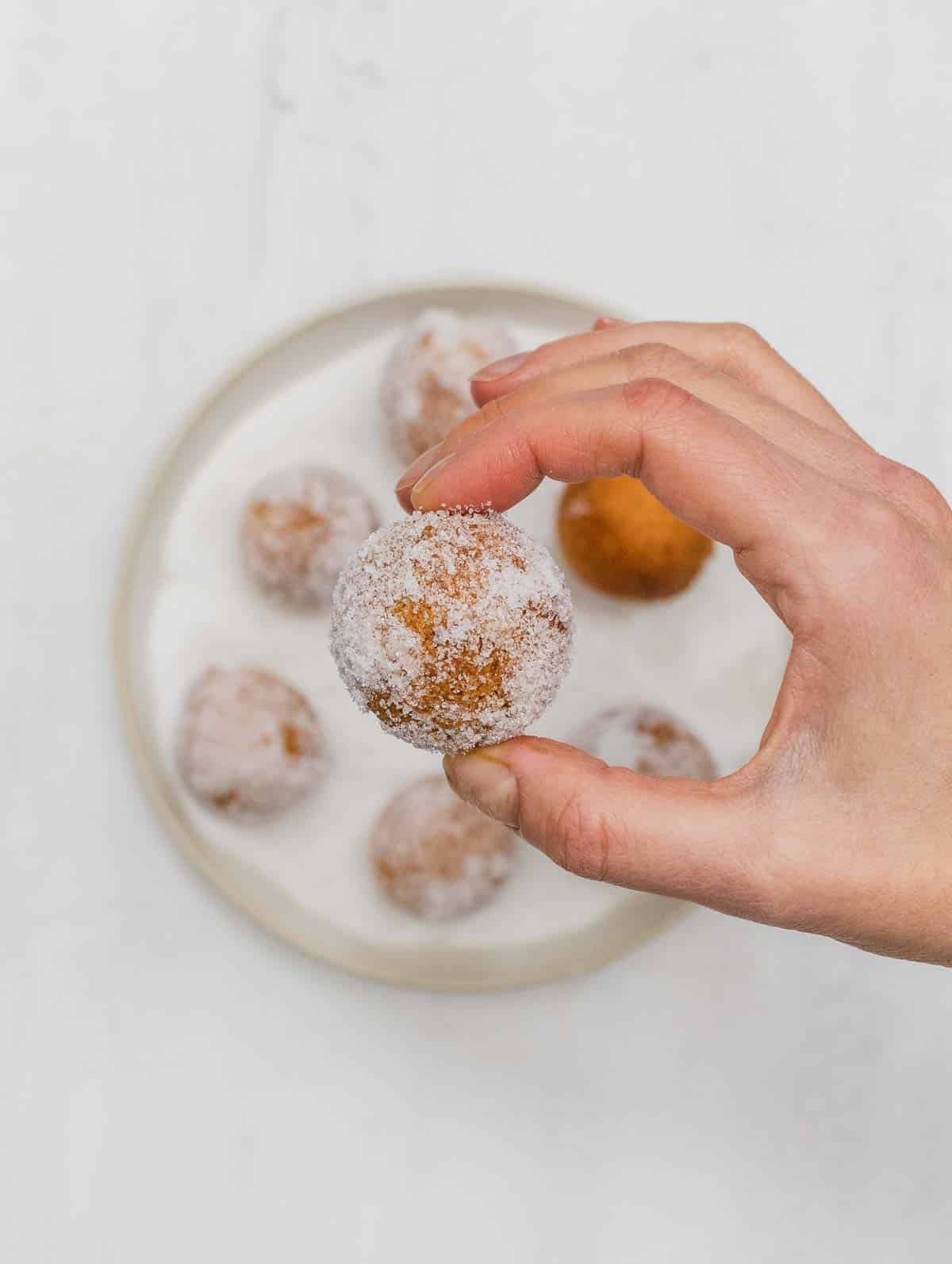
I promise you that both versions are so delicious. The baked ones are light, soft, and just a little moist on the inside. They are irresistible!
The deep-fried ones, well, they are deep-fried, so you can only imagine how good they taste.
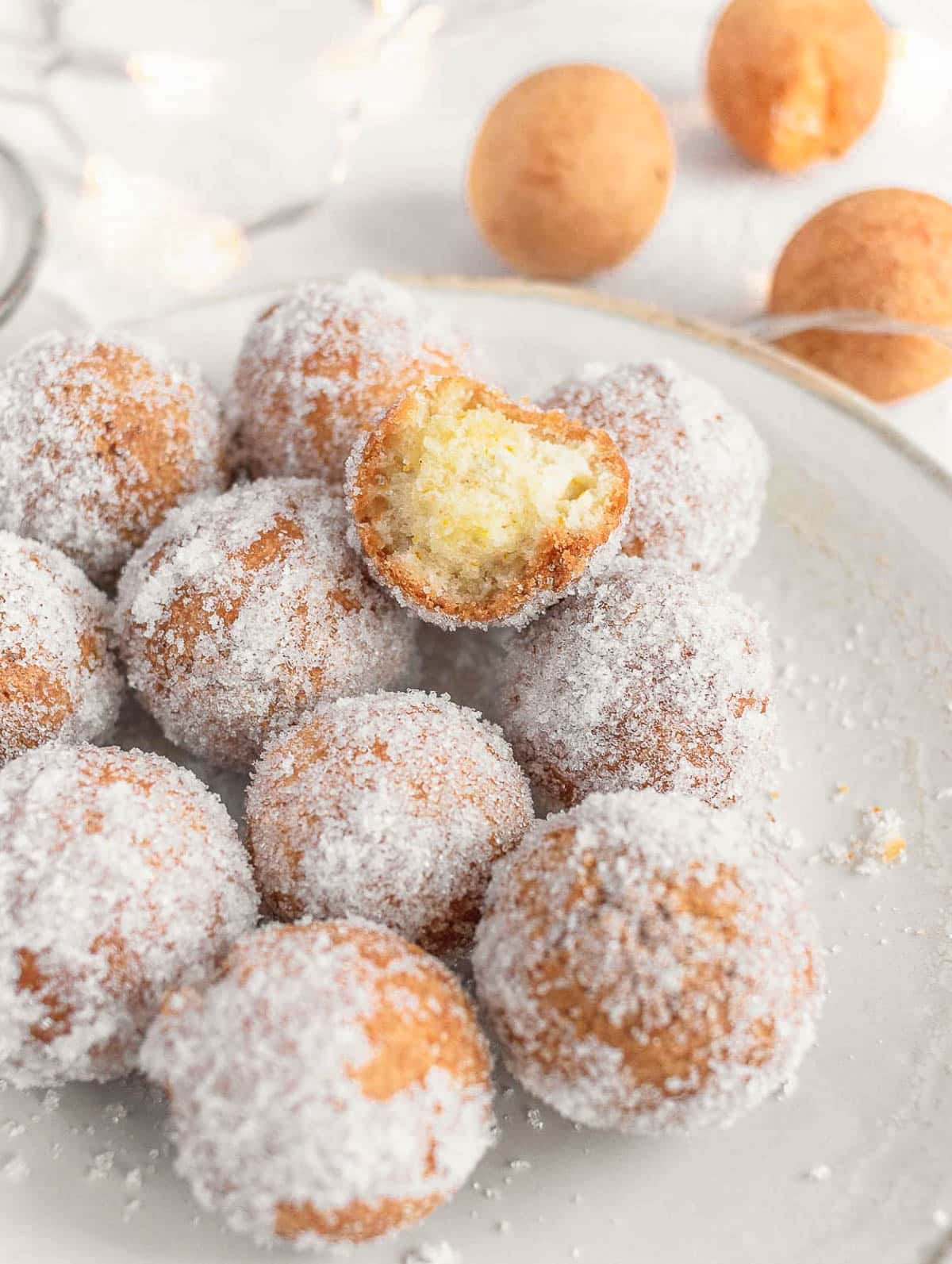
Tips
- Oven-baked: to keep them moist on the inside, you basically need to slightly undercook them. In my experience 12 to 13 minutes is the right time. Don’t let them colour on top and they’ll be fine.
- Deep-Fry: oil temperature is key. Keep the oil temperature at around 165C or 330F.
- Oil too hot? Turn the heat off immediately and put a metal spoon in the oil to lower the temperature. If the oil is too hot the dough will brown too fast. The outer shell will be too hard, heavy and burned.
- Oil not hot enough? Never let the oil get below 160C (320F). The dough balls will absorb too much oil and they’ll be soggy and heavy.
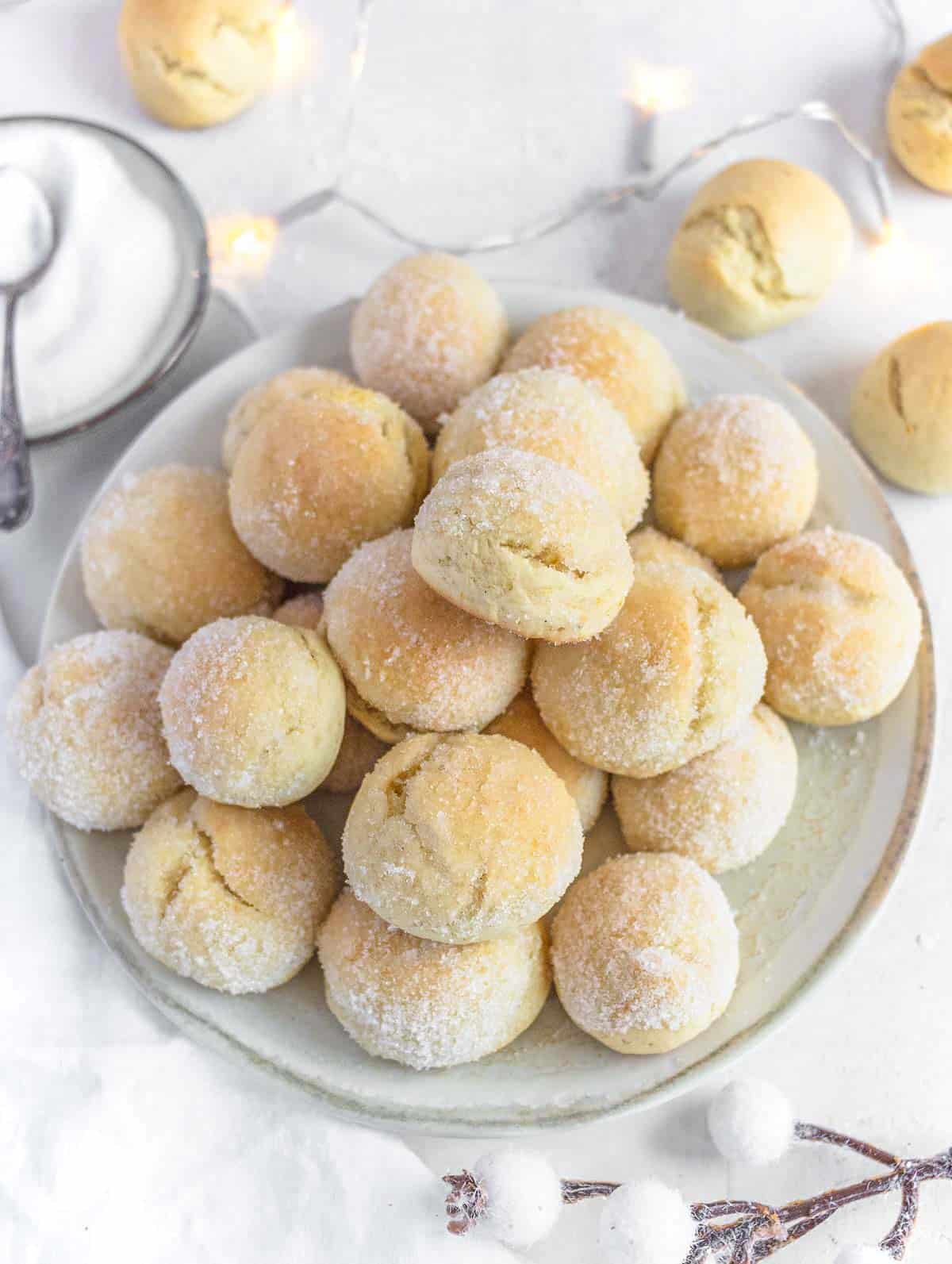
Questions
Castagnole are a typical Italian dessert that dates back hundreds of years. They are eaten during the carnival season in Italy.
Yes! Oven-baked castagnole are as authentic and traditional as deep-fried ones and appear in Italian cookbooks that date back to the 18th century.
Castagnola means little chestnut, due to their small round shape.
Storage
Deep-fried castagnole don’t store very well and they are best eaten on the same day.
You can store oven-baked ones for up to 3 days in a reusable plastic bag. You can also freeze the dough already shaped, before cooking it.
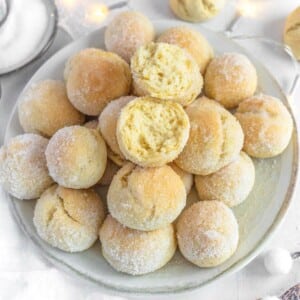
Castagnole – Italian Sweet Dough Balls
Ingredients
Dry Ingredients
- 1⅔ cup all-purpose flour
- ⅔ cup sugar
- 1 teaspoon baking powder
- 1 orange or lemon the grated zest (optional)
- 1 pinch salt
Wet Ingredients
- ¼ cup plant milk soy, oat, almond, or other
- 3 tablespoons oil canola or sunflower seed oil
- 2 tablespoons anise liquor or any other liquor (or plant milk for alcohol free)
- 1 teaspoon vanilla extract
Topping
- ½ cup sugar (if you like you can cinnamon to the sugar)
- ½ cup plant milk (needed only for the oven baked castagnole)
For frying
- ½ gallon frying oil
Instructions
- To a bowl, add the dry ingredients: flour, sugar, salt, baking powder, and orange zest. Stir with a whisk to mix.
- Now add the wet ingredients: plant milk, oil, liquor, and vanilla extract. Mix with a spatula till you get a dough ball.
- Transfer the dough ball onto a worktop and knead with your hands for about 5 minutes.
- Cut the dough into 32 pieces.Tip: first cut the dough in half. Then cut each in half again. Keep cutting each piece in half till you have 32 pieces.Shape each piece into small balls, between the palms of your hands.
Oven-Baked Castagnole
- Place the doughnut holes into a baking tray lined with parchment paper.Bake in a preheated oven at 360F or 180C for 12 to 14 minutes max.NOTE: do not over-bake. Oven-baked donut holes should NOT be golden. They should be white on top, so that they keep their soft and moist core. If you bake them too long they'll dry out.
- Let the donut holes cool for 2 minutes, then quickly dip each one of them in plant-milk, and then roll them in sugar.
Deep-Fried Castagnole
- In a small pot with tall edges, bring the frying oil to frying temperature. To fry castagnole your oil should be at 330F or 165C.Dip a few castagnole at the time in the oil. Turn them around while they fry and cook for about 2 to 3 minutes mx, until they get slightly puffy, crispy and golden.
- Let the castagnole cool down for 5 minutes on a tray lined with kitchen paper to get rid of the excess oil.Then roll them in sugar till they are fully coated.
Notes
Nutrition
If you liked this recipe, you might also enjoy:
Collections
30 Vegan Brunch Recipes
Collections
40 Vegan Desserts
Desserts
Chocolate Glazed Donuts
Desserts


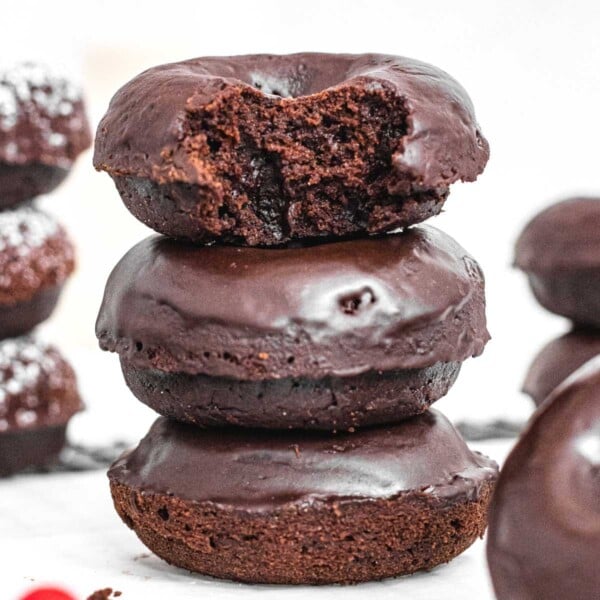
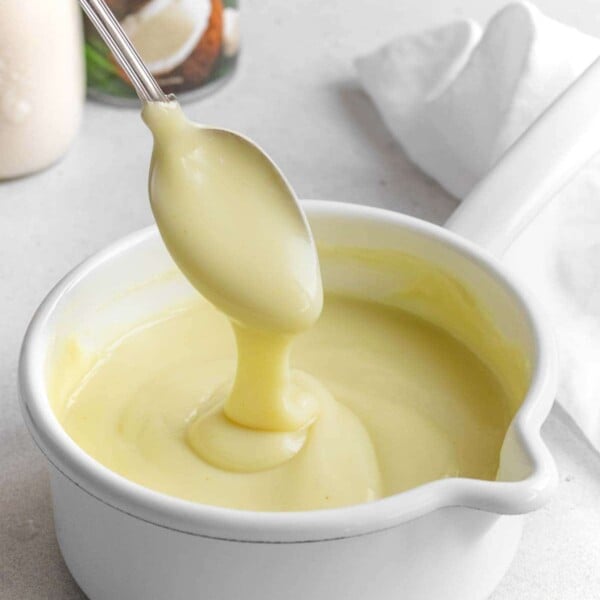

Hi Nico.
Your recipe for castagnole is just what I’m looking for.
I wanted to make them in advance to take to a dinner party. Is this doable or are they best eaten the day of?
Also, how do you store them in order to maintain their freshness?
Thanks.
Anna
Hi Anna,
You can make them ahead and keep them in a ziplock bag for about a day.
If they get too dry, you can warm them in the microwave for a few seconds (30 to 60) and they’ll get warm and moist again.
I hope this helps!
Nico
Forking Excellent! Will definitely make these again! Shared recipe with friends and family. Excited to try other recipes!!!
Carmella thank you so much for your message! We are so happy you like our dough balls 🙂 Grazie mille for sharing the recipe! 🙂
I have been looking for Italian dessert and baking recipes that are vegan and this website has been so amazing! It’s exactly what I was looking for. These dough balls came out phenomenal – soft and fluffy and not too sweet, with the added tang of the lemon zest. Plus, the option to bake the dough is super important to me as fried foods tend not to sit well with me. I used apple cider vinegar instead of white wine, and I added 1tsp of vanilla extract. I didn’t get 22 balls out of the dough (I think I got 16, but my fam ate some before I thought to count!) but 12 minutes in the oven was a perfect bake time. I will definitely make these again and I am excited to try more of your recipes, Nico!
Hi Myra, thank you soooo much for your message. We are so happy that you and your family liked the dough balls 🙂 Also, that’s really good to know that it worked with apple cider vinegar instead of white one. I am definitely going to try next time 🙂
Thanks soo much again!
Nico